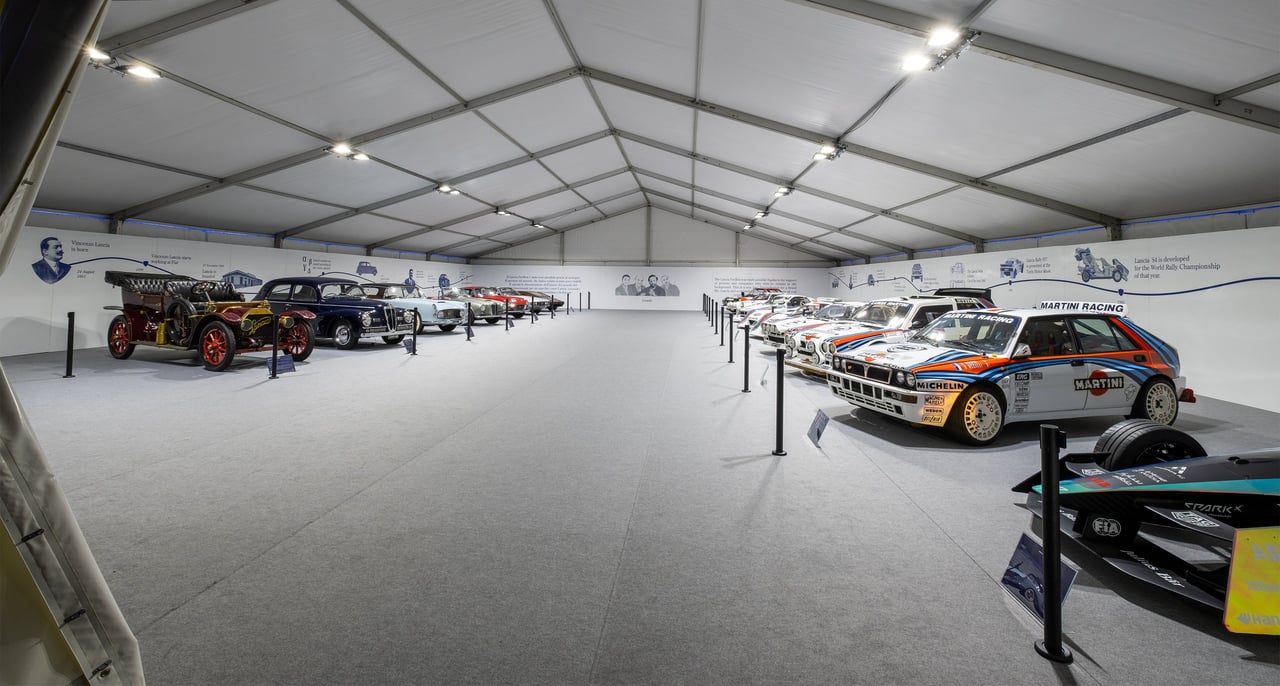
High up in the mountains of Switzerland, St Moritz is busy preparing itself for a busy weekend of car-themed activities. Now in its 12th year of running, Passion Engadina 2023 is set to bring a fun-filled celebration of classic and collector car culture to the star-studded location, and in true Passione fashion, it’s kicked off with a bang.
Despite the event officially starting on the 25th of August, running across the weekend with a host of events designed to push cars, drivers, and co-drivers to their limits across the breath-taking roads that surround St Moritz, the visiting public who have arrived early will still get a taste of some Lancia goodness, thanks to the Passione Pavilion. Home to a staggering 16 cars have been carefully curated and assembled into the free-to-visit space, spanning nine decades of Lancia’s rich history.
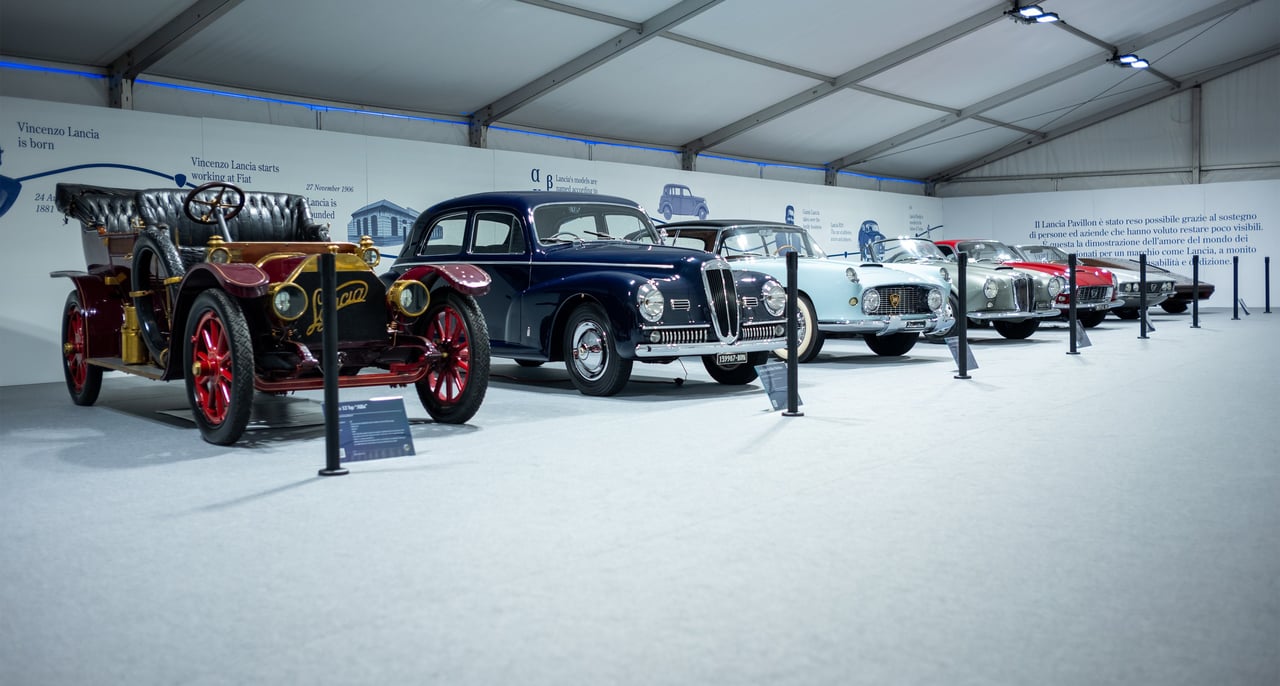
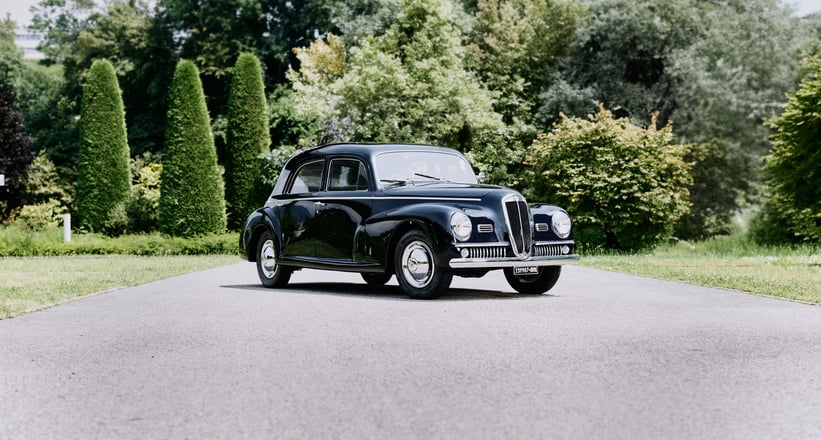
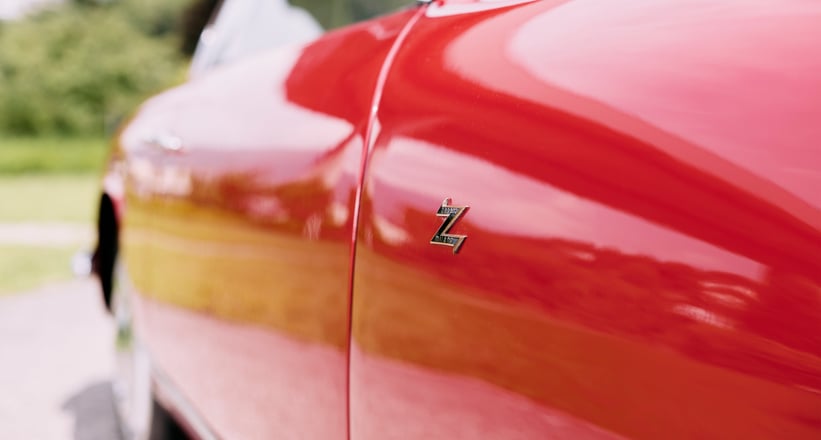
As a brand, Lancia might not be the first Italian car maker that springs to mind, but despite its veiled appearance in modern car building, during its heyday Lancia were a force to be reckoned with. Founded almost 120 years ago in November 1906 as Lancia & C. Fabbrica Automobili, two Fiat racing drivers, Vincenzo Lancia and his friend, Claudio Fogolin had a dream to bring their racing knowledge to the masses. The first car manufactured by Lancia was the "Tipo 51" or "12 HP”, the one later, and rather confusingly called the “Alfa”, which made its way to the world in 1907. In its single year of production, 108 examples were made, and the Pavilion’s journey into the world of Lancia starts with a stunning example from 1908, complete with its front-mounted, in-line 4-cylinder, cast-iron bi-block engine which is good for, you guessed it, 12 horsepower.
No line-up of by-gone era Lancias would be complete without a deep-dive into the 1950s and 1960s, which would see the brand battle with having to rebuild back to greatness after the tragic loss of its founder Vincenzo in 1937. That greatness came with the Aurelia, a sleek-bodied, stylish car that was produced in several differing body styles, from four-door to a sporty GT Coupé and of course, a drop-top spider. It’s elegant styling made it an instant hit with those looking for a stylish alternative to offerings from Alfa Romeo and Fiat, especially with that powerful V6 under the bonnet. As the 1960s rolled round, the Flaminia would claim Lancia’s spotlight, and caught the attention of many Italian design houses, one of whom being Zagato. Inside the Pavilion, expect to see two extremely rare examples of the Flaminia, the first being a Zagato-bodied Super Sport, a sleek 2-door, 2-seater coupé which had the performance as well as the gorgeous looks. Alongside this ultra-rare example sits a Flaminia Marica, a one-of-a-kind design study built by Ghia on the last Flaminia GT chassis, marking the perfect way to round out the Lancia brand in the swinging sixties.
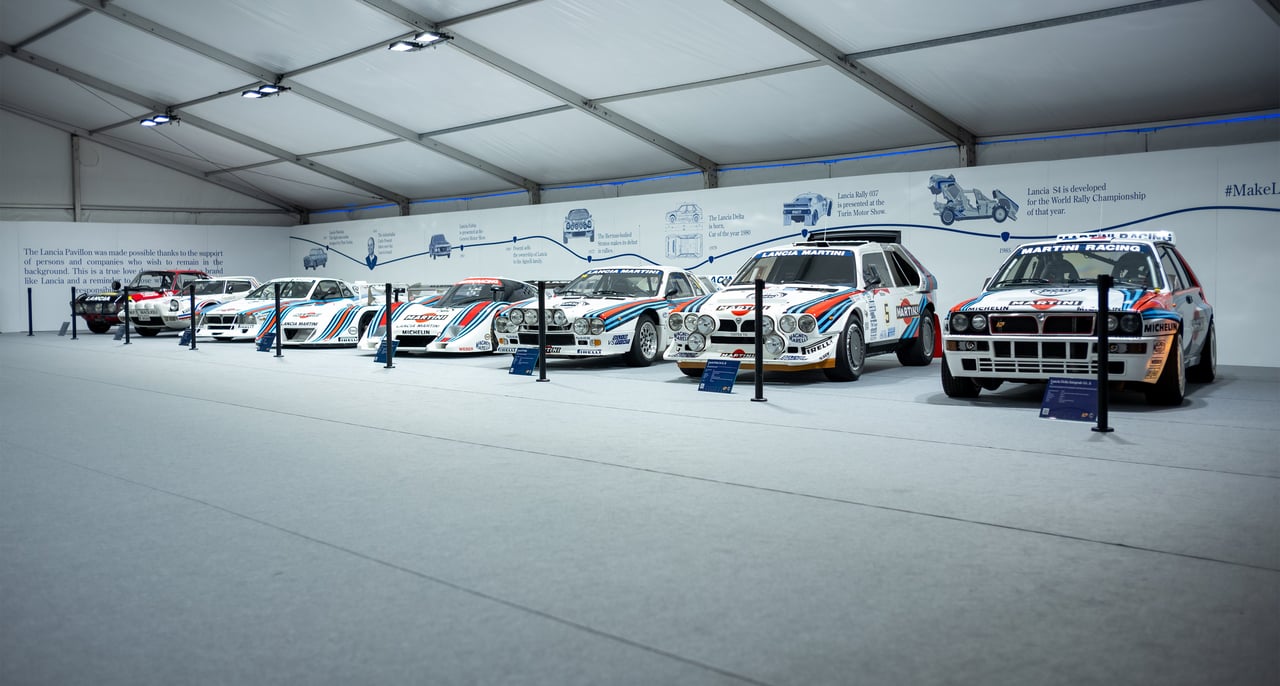
Even while Lancia were busy creating effortlessly beautiful machines that looked more than at home cruising along the Italian coastlines, the brand has motorsport and competition pumping through its veins, and the 1970s would be where Lancia doubled down on returning to their dreams of racing success. The Fulvia would be their ticket to glory. Designed by the expert hand of Piero Castagnero in 1965, the Fulvia was produced in several winning HF race versions, where examples such as this one displayed in the Pavilion wouldn’t just beat their rivals, they’d dominate them. This example is the winner of the 1970 East African Safari Rally with Lampinen & Davenport at the helm, showcasing just how eager Lancia were for worldwide motorsport glory.
As the years rolled by, Lancia continued to flex their motorsport-derived muscles out on the world’s toughest rally stages, and the Stratos became the car to beat for other brands. Just before the Stratos took centre stage, a Lancia Stratos-based show-car by Bertone would be presented at the 1978 Turin Motor Show as the main protagonist of its stand. This incredibly unique, wedge-shaped concept showcased an entirely new direction for the Italian brand, and set the premise early on for how the production version of the Stratos would look.
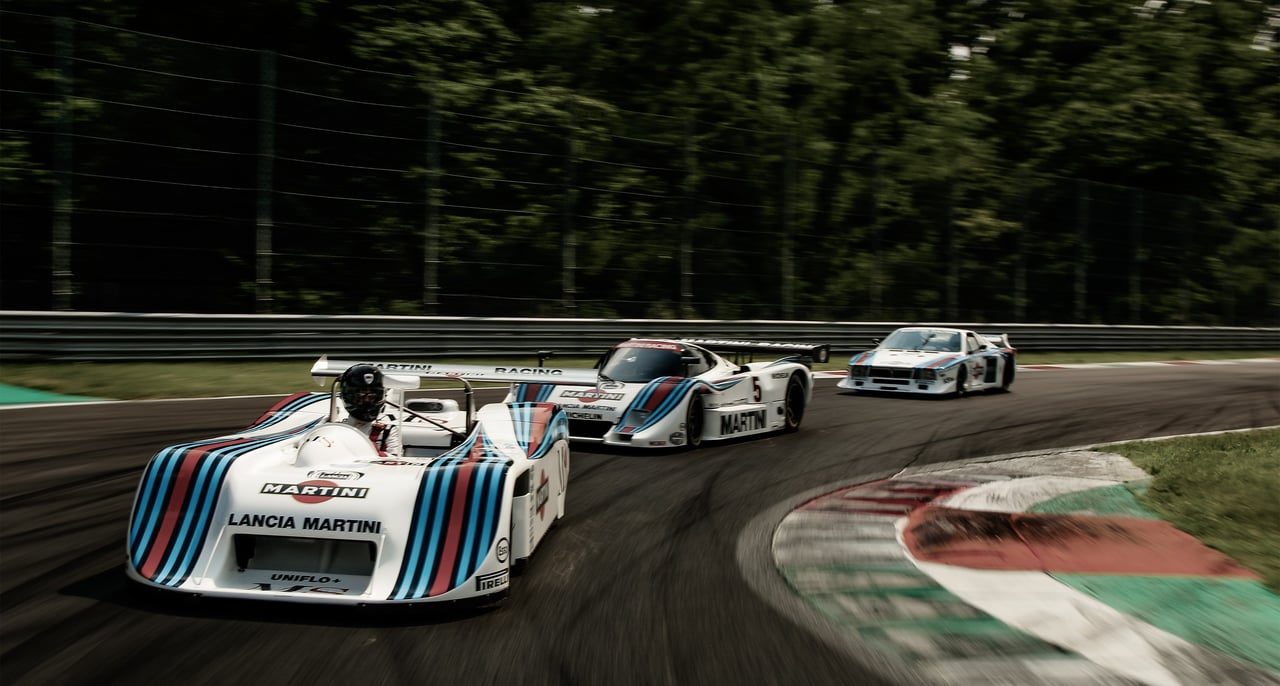
While Lancia is perhaps best known for its many, many accolades on the rally stages, the brand was no slouch on the racetrack, too. Bringing some racing flair to this exceptional line up are a pair of Lancia LCs, cars that were driven to multiple podiums throughout their lifespan. During the late 1970s into the 1980s, the Montecarlo Turbo continued to dominate in its division and won the all-round World Championships. However, in 1982, a change of regulations imposed by the FIA – which led to the creation of the new Group C division, pushed Lancia to launch a project for a new sports car to compete in the Endurance championship. This led to creation of the LC1, an open-top racing prototype, fitted with the Montecarlo Turbo engine. Only 4 models were built, competing in the unforgettable Martini Racing livery. What followed was the LC1, the C indicating the first Lancia built for Group C, which would go on to conquer three pole positions out of eight races held in the season and managed to keep up with the Porsche 956 team, a car with far more at its disposal.
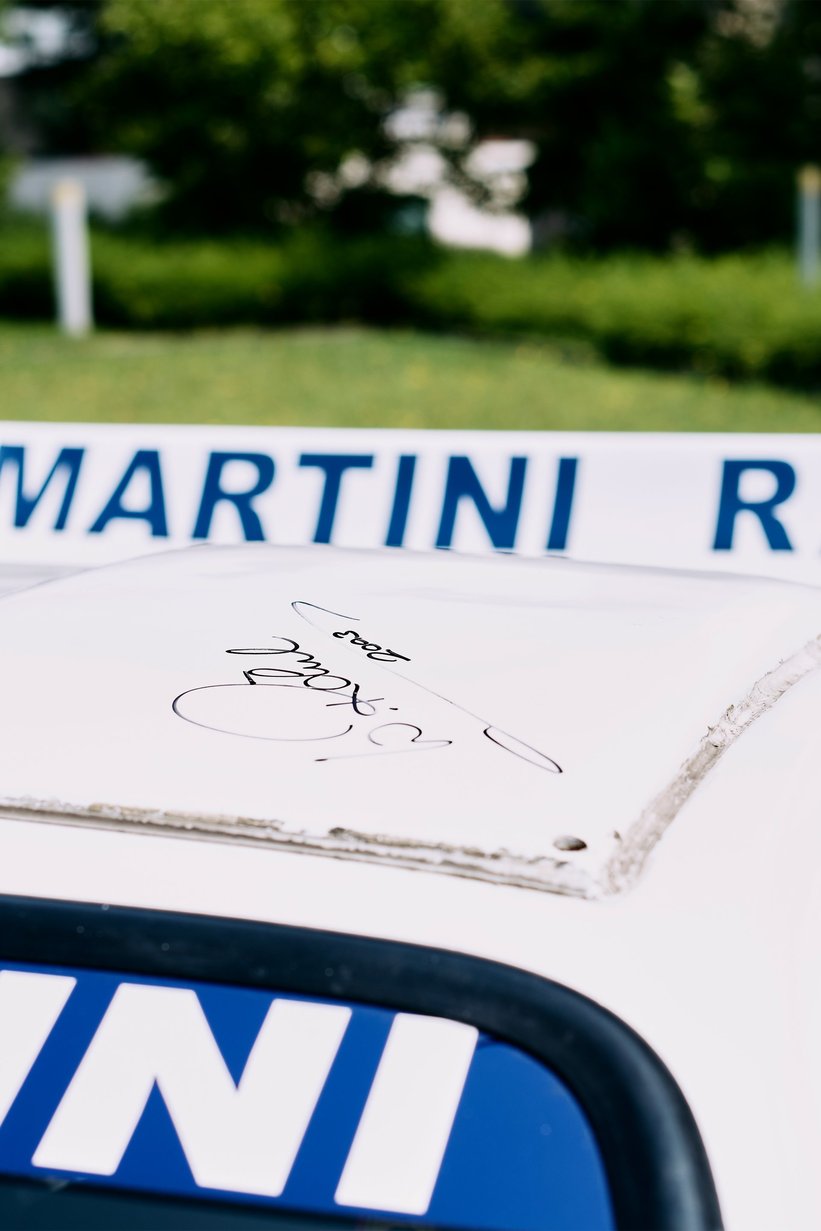

Of course, we simply couldn’t talk about Lanicas without mentioning the O37 and Delta, two of the brand’s most famed models. As rallying reached its most dangerous and innovative phase with the Group B era, Lancia were often at the forefront of the competition, producing rally cars capable of over 600 horsepower, despite the regulations grappling to put a limit on power to protect fans and competitors. These incredible machines often found draped in the iconic Martini liveries symbolise the true essence of what makes Lancia so great. To this day, they hold the record for having the most Manufacturers' Championships in the World Rally Championship, despite having stopped competing since the end of the 1993 season. On top of that impressive fact, the Lancia Delta is the most successful individual model designation ever to compete in rallying, closely followed by the Volkswagen Polo R, which fell just three wins behind the Delta’s 46 overall wins.
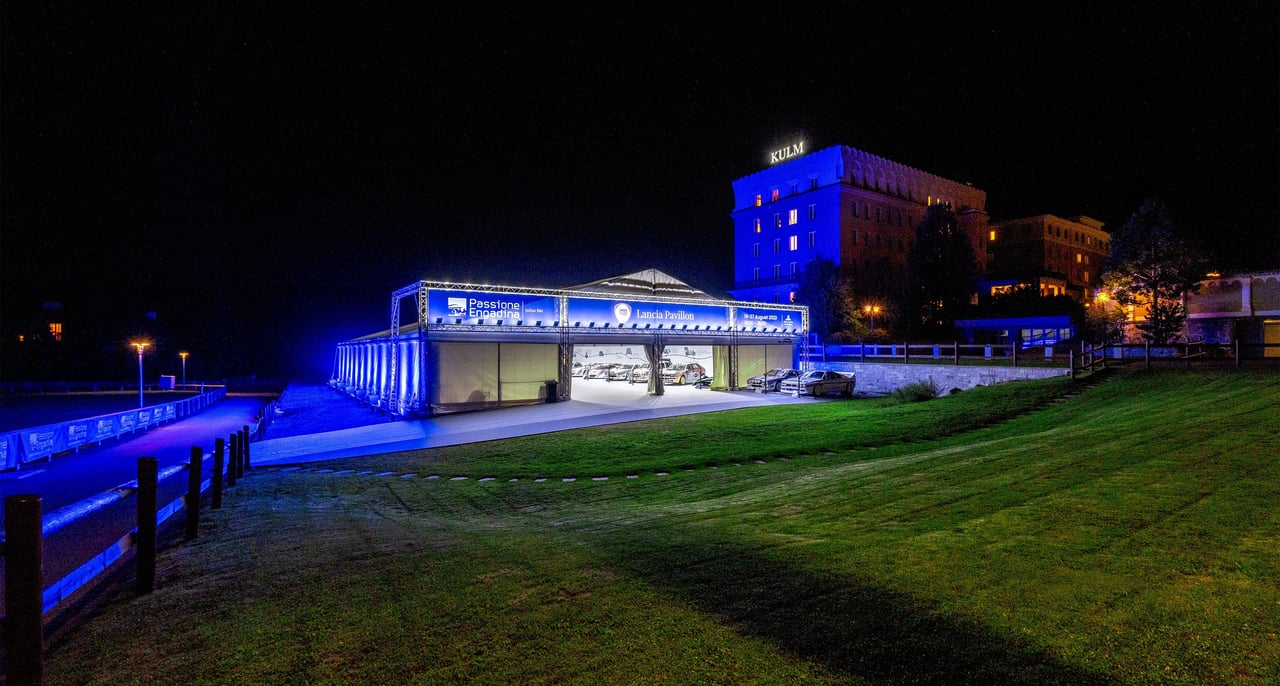
It's hard to believe there is almost 100 years of history inside these four walls, a room filled with the roller-coaster journey of Italian manufacturing that captured the hearts of their people and bringing loyal fans from all over the world along for the ride whilst doing so. The Lancia Pavilion is now open and completely free to the public, so if you find yourself in the area, we advise you give yourself a few hours to take in each model!

















